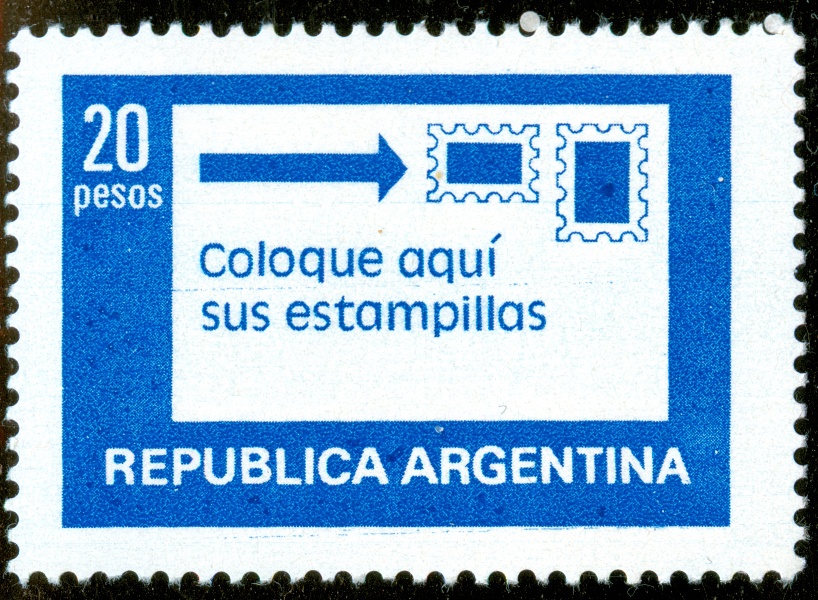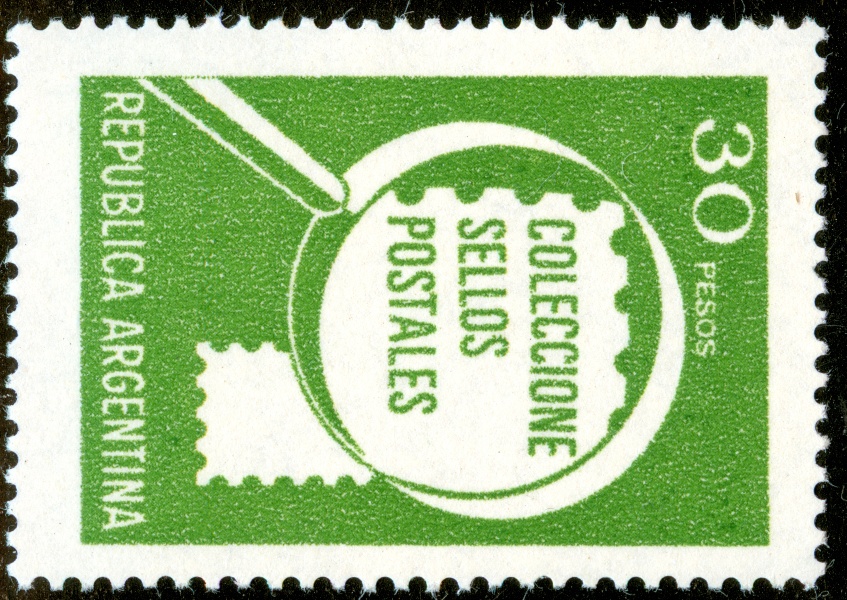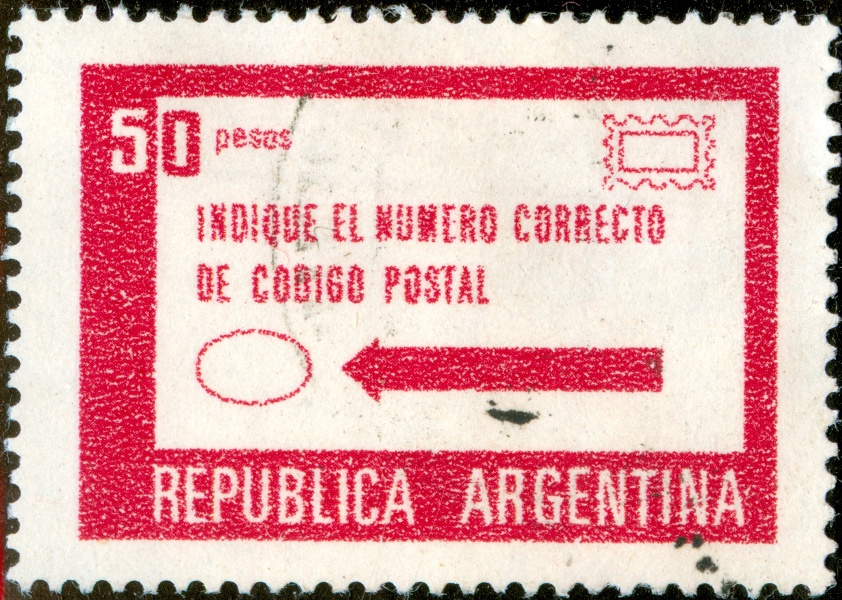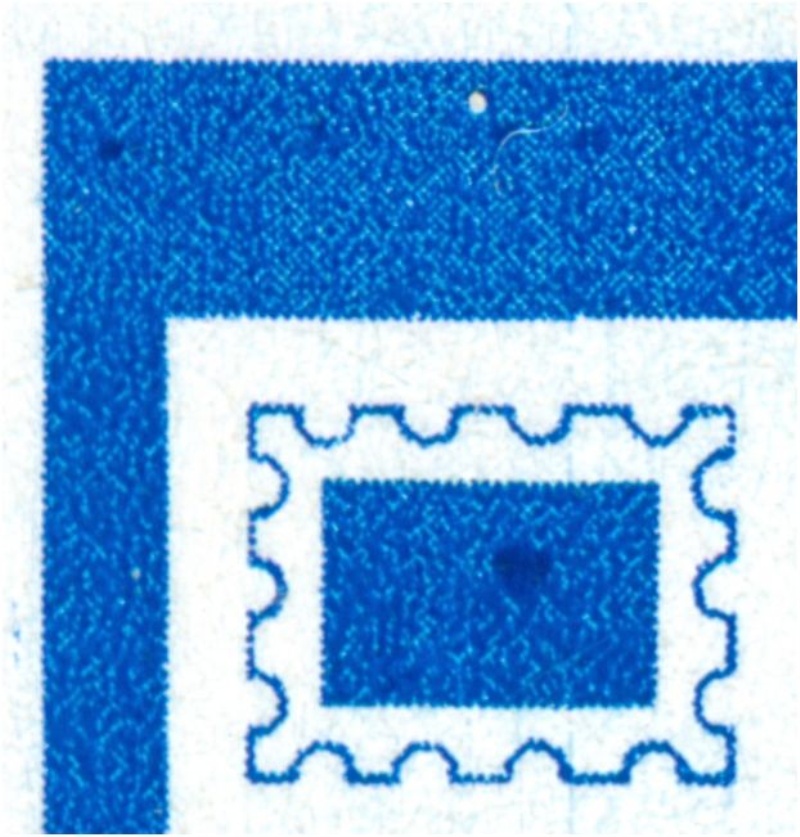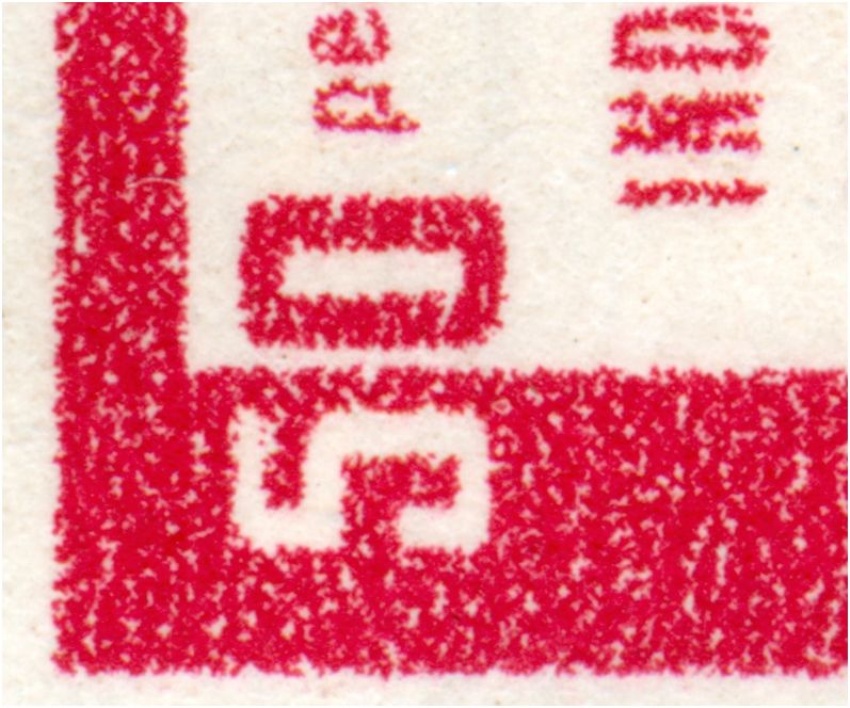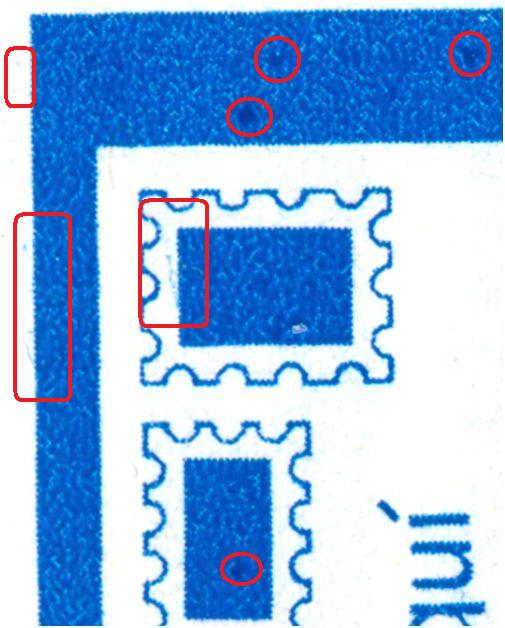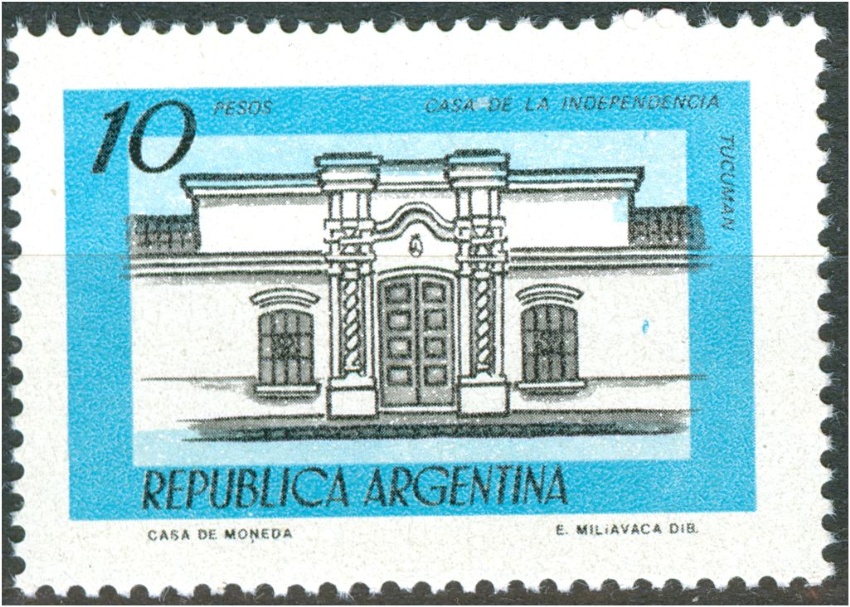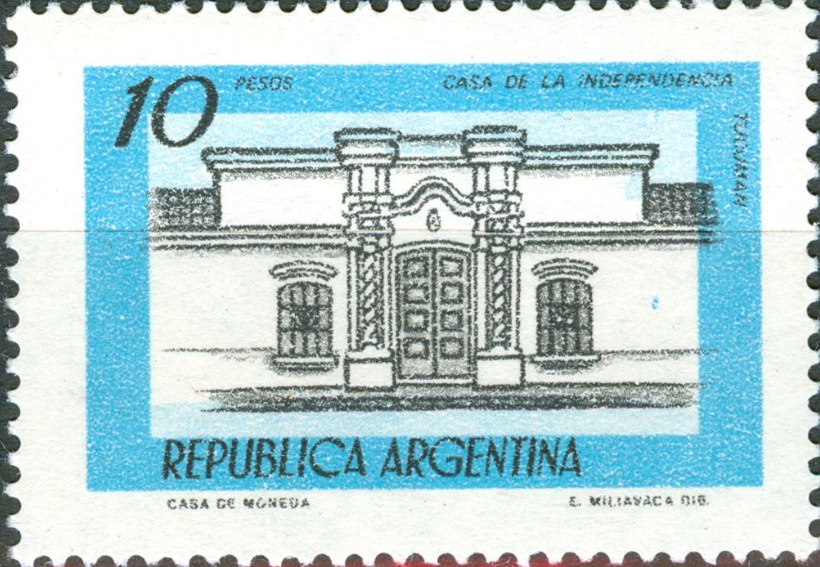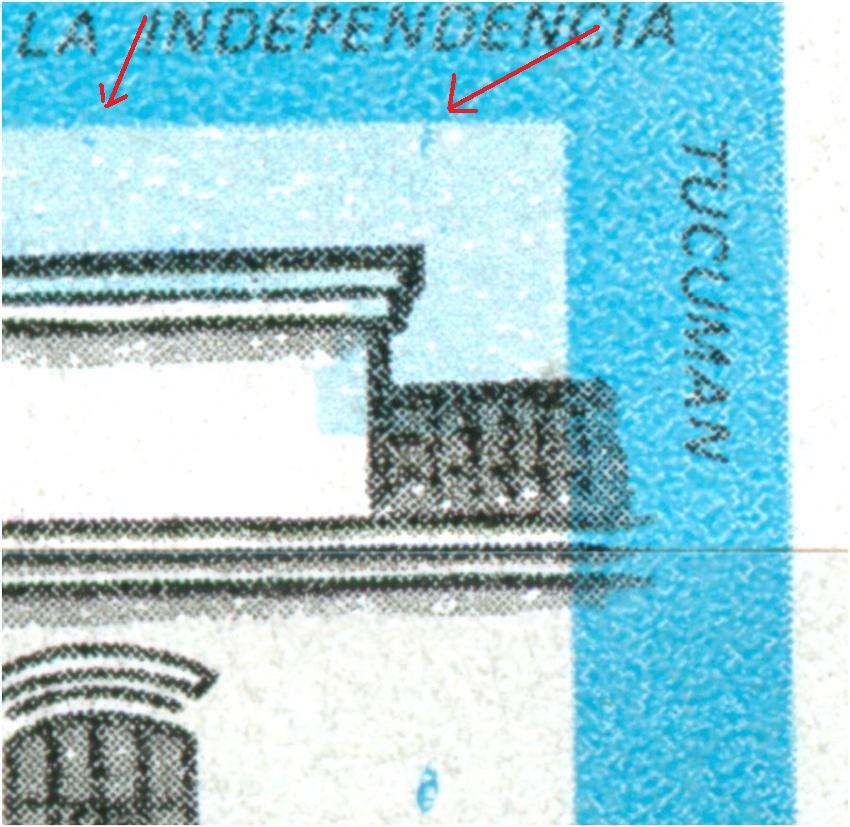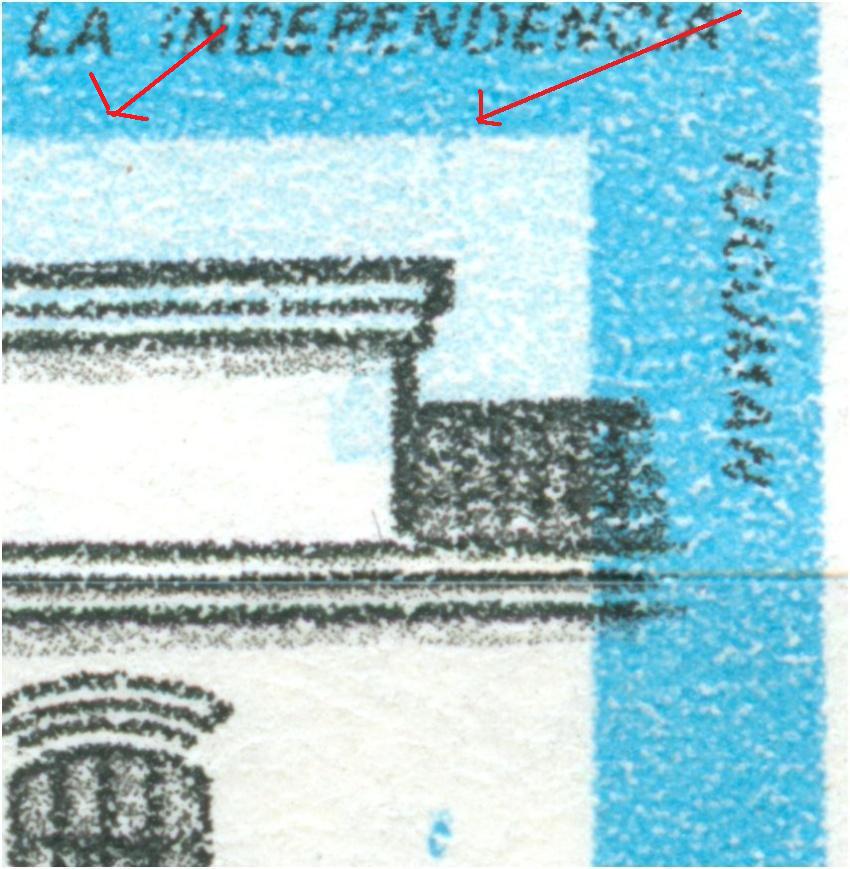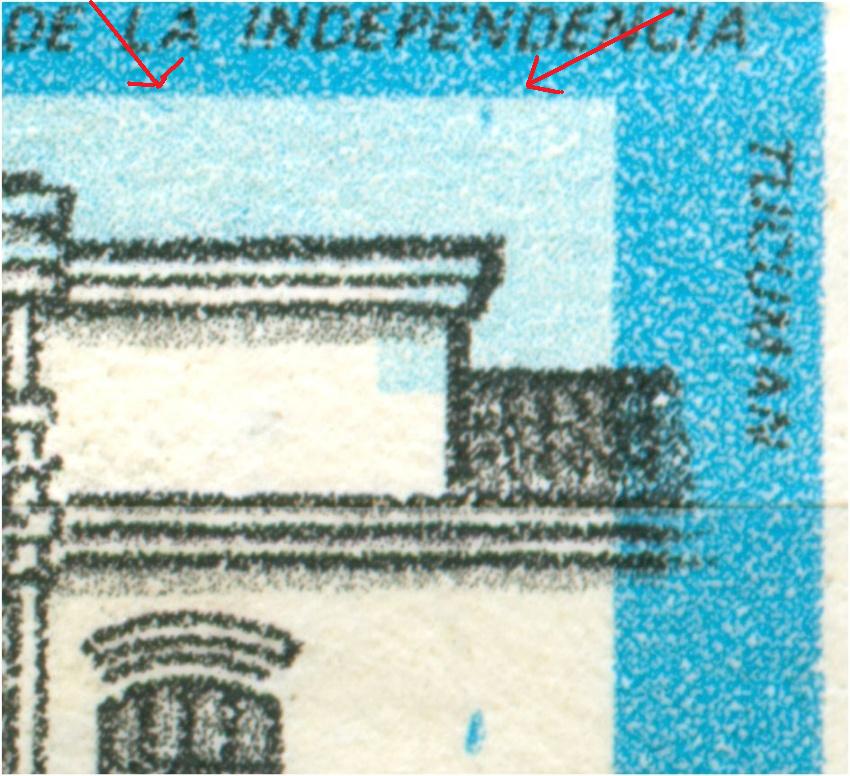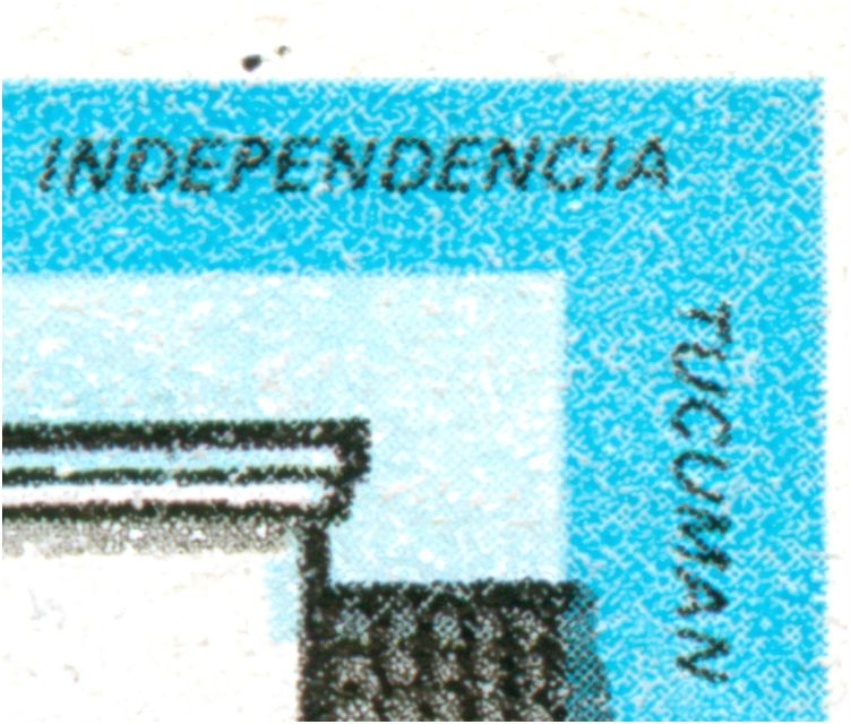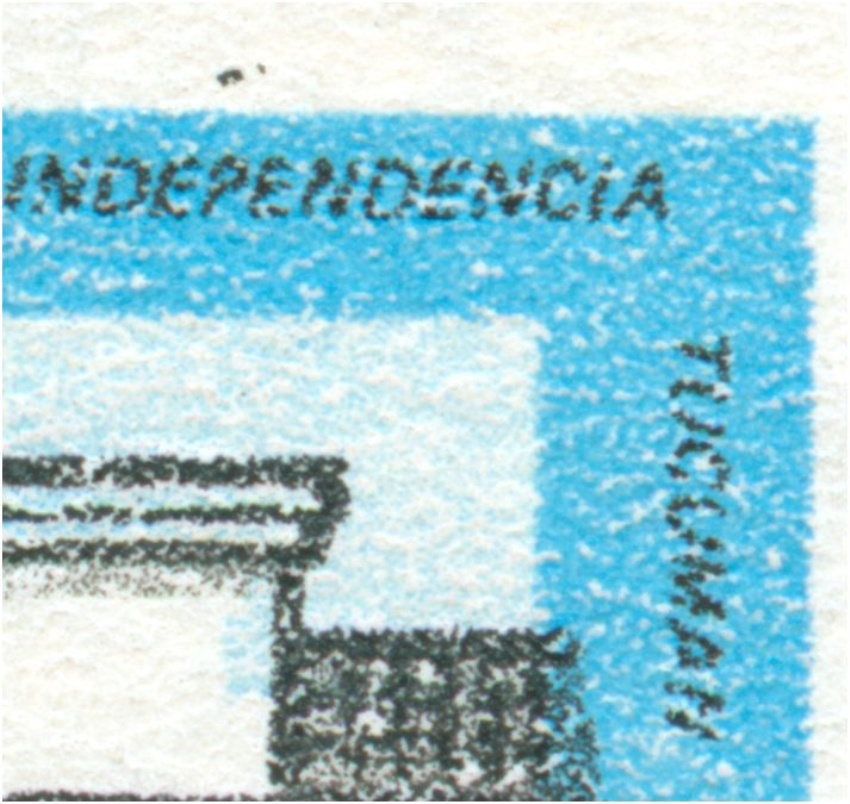As to the "Postal Code" definitives (Difusión de servicios) I
forgot the mention that the blue 20 pesos stamp also exist in the
coarse photogravure version:
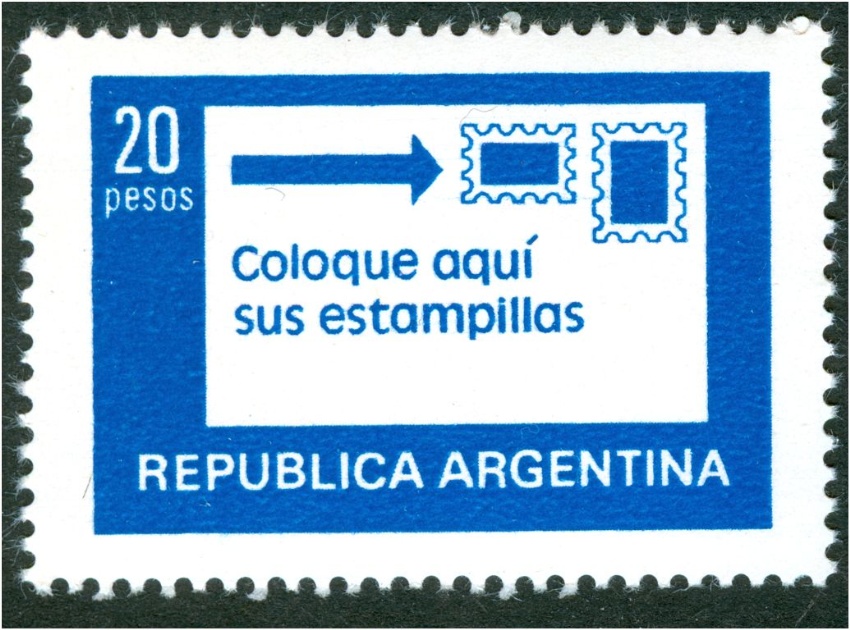

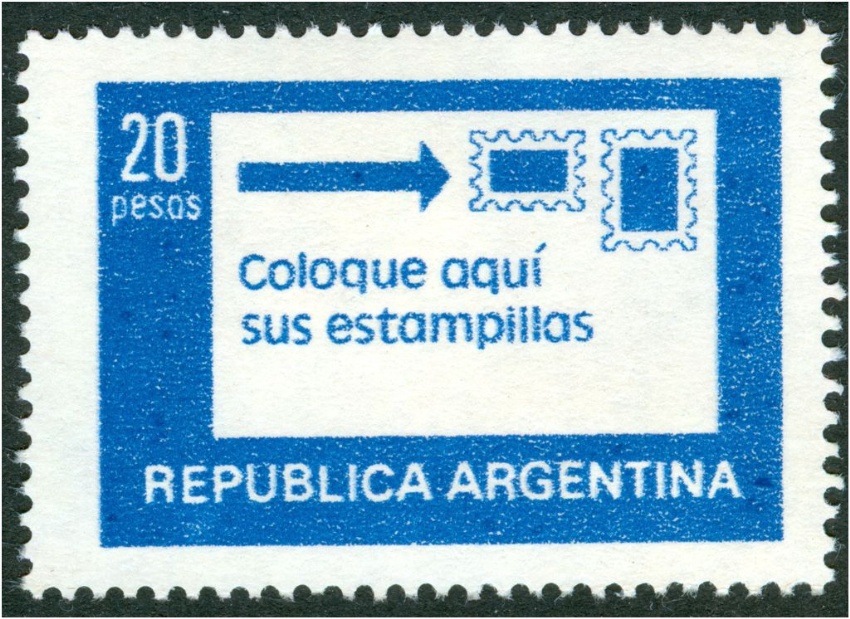
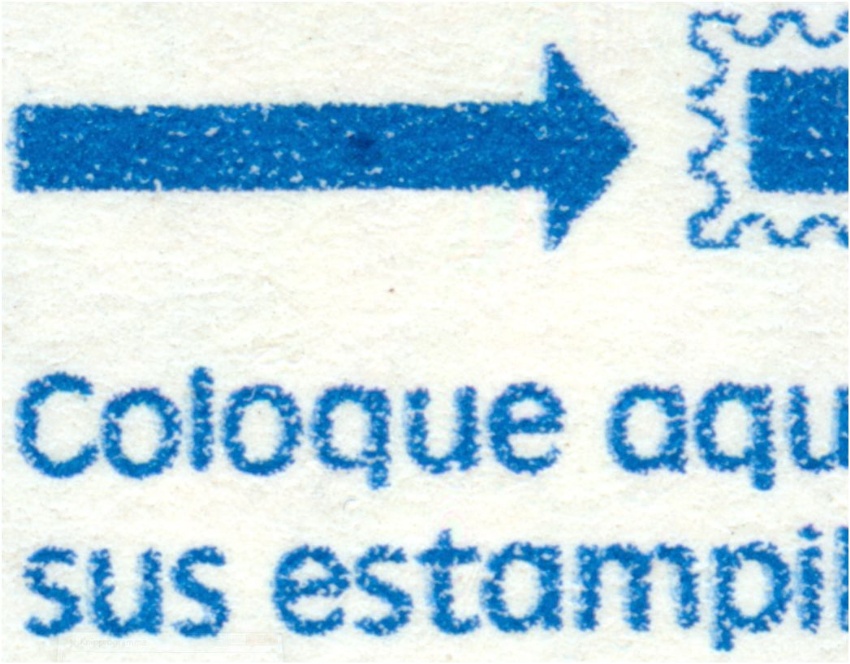
and also that other definitives of that period have both types too
- at least for some values:
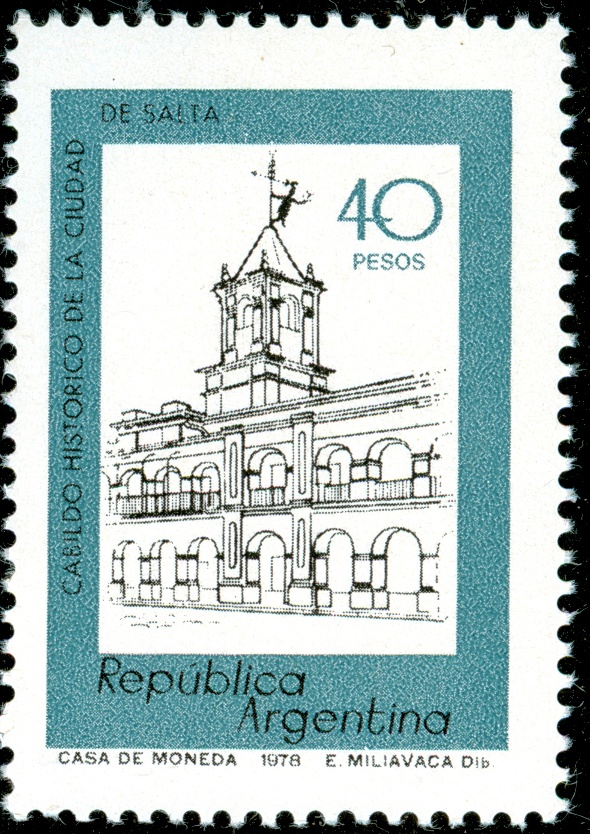
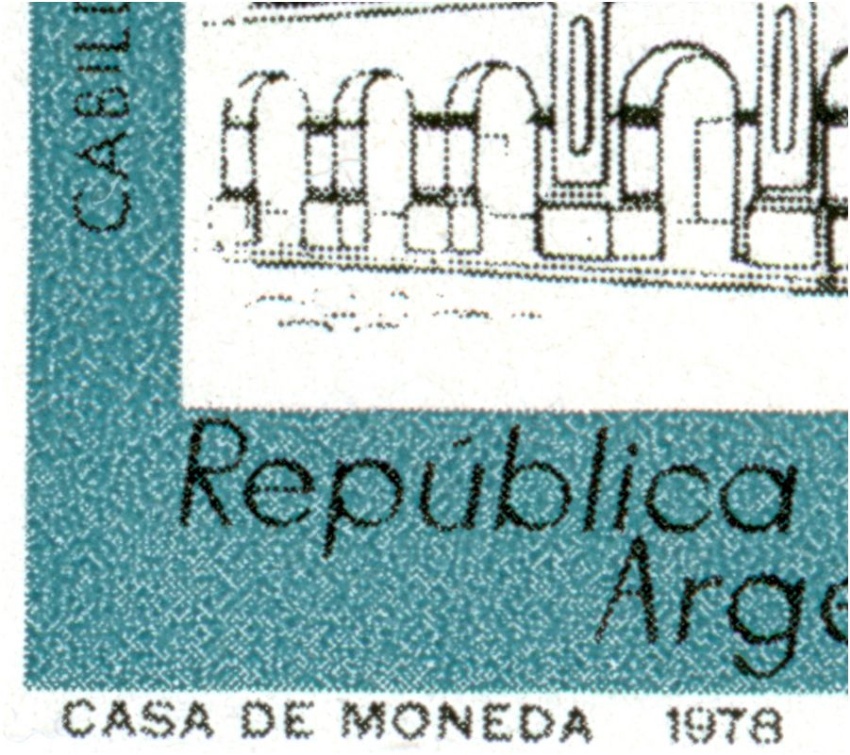

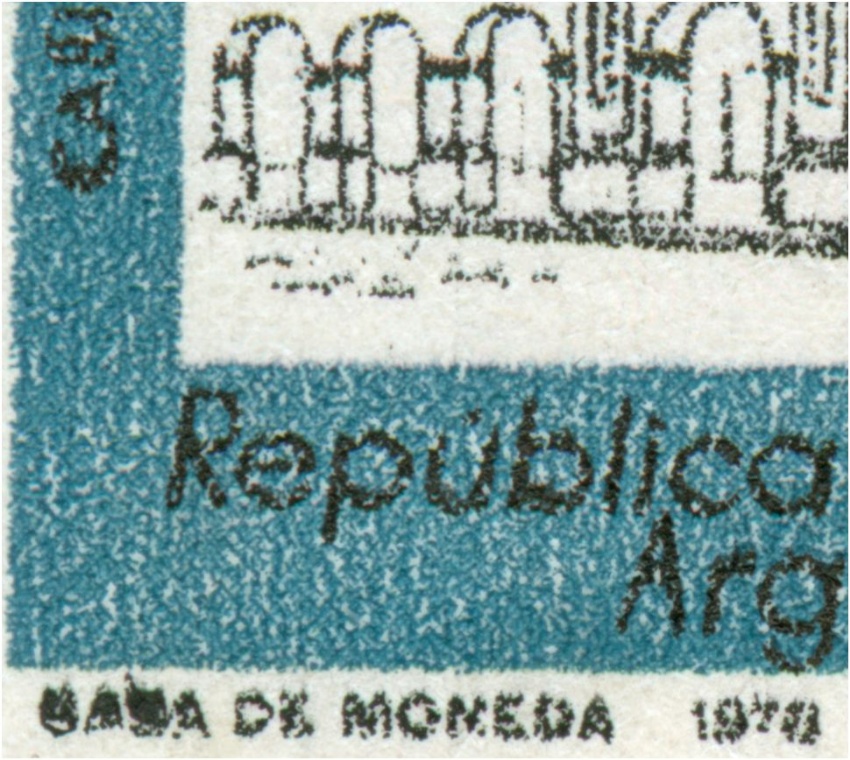
More of this in the "mini" definitives.......
In 1978 short set Postal Services the new type of photogravure
printing [etching??) shows 2 different cylinders judging by the screen
gauge: 70 lines/cm instead of 100 lines/cm as the 2 other values have.
70:
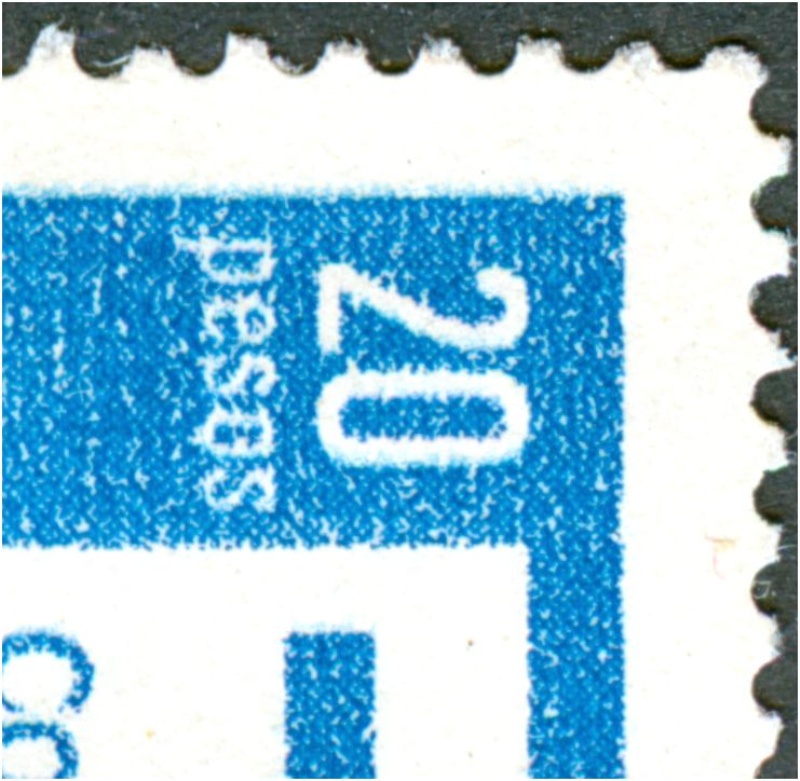
100:
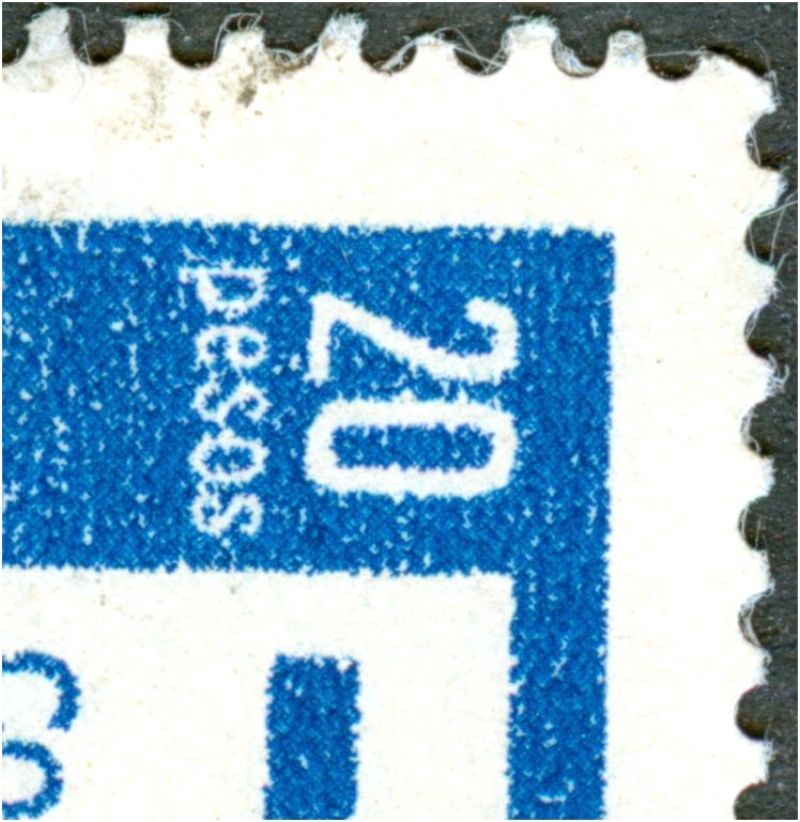
I know it is a difficult subject!
Most stamps that are assigned "mate" in the circa 1976-1979
definitives have this different type of photogravure.
Or is it the type of paper that is causing the phenomenon and/or
the way the photogravure cylinders have been prepared? It is certainly
not accidental as several stamps only exist this way!
Why should the Casa de Moneda use such a paper that would make a
mess out of beautiful design like those of mr E. Miliavaca???? And not
only his!
One thing is clear already! What philatelists in Argentina call
'mate' is NOT just "mate" it is "tizado mate" vs "tizado brillante".
What I was searching for long enough was proof that photogravure
cylinders had been used for both ways of printing! In order to do so
you need the help of fly-speck philately and come up with identical
though sometimes minte flaws in the cylinders that occur again!














